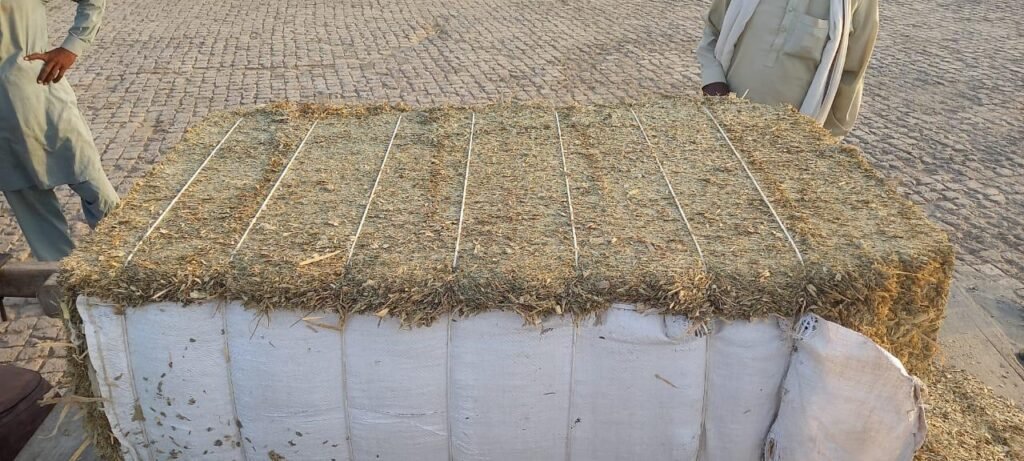
Overview
The agricultural sector has always been the backbone of Pakistan’s economy; however, in recent years, the focus has shifted from traditional crops to value-added products that can yield higher returns in the global market.
One such emerging opportunity is maize silage, which holds strong potential as an export commodity. Due to stable climates, the growing demand for animal feed in Central Asia and the Middle East provides Pakistan with a competitive edge.
Processing maize into quality silage increases its value, ensures feed availability year-round, and creates opportunities for Pakistani farmers and agribusinesses to access international markets. In this article, we’ll examine the strengths, rationale, challenges, and practical steps required to increase exports of maize silage from Pakistan.
Why Maize Silage?
Maize silage is a preserved livestock feed produced by fermenting the whole maize plant, including the kernels, stalks, and leaves. Farmers can also use the raw material of the crop, but if they harvest at the right phase, chop it into small pieces and pack it tightly in air bags for a natural fermentation process.
This process makes it a rich source of feed for buffalo, cattle, and other nutrients. Silage is stored for several months without losing its nutrient quality.
The advantages of maize silage are important for beef and dairy farmers, as their animals need Fiber and energy for growth, milk production, and overall health. With maize silage, farmers are less dependent on seasonal fodder since it helps bridge feed shortages. Maize silage encourages animals to eat more because it is tasty and easy to digest.
Competitive advantages Pakistan can build on
- Favourable Agro-climatic zones: In Sindh and Punjab regions with reliable irrigation and fertile soils, produce high maize yields. Harvesting the crop at the right moisture level and processing it without delay results in silage that ferments well and maintains quality.”
- Existing maize production base: Maize is one of the main cereals grown in Pakistan, used both for grain and as fodder. Expanding silage production builds on the country’s existing supply networks, seed availability, and farmers’ experience.
- Low Labor costs: Low Labor costs and Pakistan’s closeness to Middle Eastern and Central Asian countries provide transport benefits.
- Business Opportunities for contract farming and agribusiness integration: Enterprises or Private firms can coordinate production, processing, and export logistics through contracting and outgrower schemes— enabling consistent supply and reducing quality variability.
Market Demand and Target Buyers
When natural feed is scarce, the demand for maize silage for animals grows. Many countries depend on imported feed for their animals, such as Qatar, the UAE, and Saudi Arabia. The growing demand presents a valuable opportunity for Pakistan to provide high-quality silage at competitive rates.
The target buyers of silage are feedlot operations, commercial dairy farms, and organizations that need high-quality feed whole year.
Pakistan has earned the trust of buyers by meeting their expectations, offering silage that is well-fermented, properly packed, and free from spoilage.
By establishing itself as a reliable supplier and forming long-term agreements with dairy processors, feed companies, and government-supported livestock programs abroad, Pakistan can ensure steady demand and enhance its role in the international dairy animal feed market.
Quality and standards: Making Pakistani Silage Export-Ready
Achieving success in exports relies on maintaining uniform and high-quality products. Important factors to consider are the dry matter content, pH level, absence of harmful mycotoxins, and proper hygienic packaging. To meet buyer expectations:
- Harvest at correct maturity and chop length
- Ensure rapid ensiling and airtight storage
- Regular Lab Test for contaminants:
- Use suitable packaging for transport
Logistics and value-chain considerations
Practical measures include:
- Local processing hubs with all facilities.
- Efficient inland transport
- Economies of scale
- Cold chain alternatives
- Regulatory and trade barriers
Risks and challenges
- Quality variability
- Storage and spoilage losses
- Competition
- Infrastructure constraints
- Finance and working capital
- Pilot projects with aggregator partners
- Invest in training and extension
- Set up quality-control labs and traceability
- Engage government and trade bodies
- Focus on branding

Muhammad Arif CEO, MBA in Finance and Marketing from South Korea University. 15 years plus experience in Agriculture Waste and Animal Feed Production, Facility Management & Export


